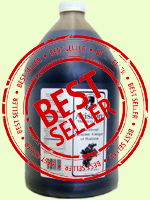Good quality olive oil contains a natural chemical that acts in a similar way to a painkiller. The active ingredient – found in greater concentrations in fresher olives – is called oleocanthal and inhibits the activity of enzymes involved in inflammation in the same way as ibuprofen and other anti-inflammatory drugs. Inflammation has been linked to a wide range of conditions such as heart disease and cancer.
To rule out the possibility that any other compound was involved, chemists at Monell and Penn created a synthetic form of oleocanthal identical in all respects to that found naturally in olive oil, and showed that it produced exactly the same throat irritation.
The sensory similarities between oleocanthal and ibuprofen led scientists at Monell and the University of the Sciences to investigate potential common pharmacological properties. Studies revealed that, like ibuprofen, oleocanthal inhibits activity of COX-1 and COX-2 enzymes. Because inhibition of COX activity underlies the anti-inflammatory actions of ibuprofen and other non-steroidal anti-inflammatory drugs (NSAIDs), the new findings suggest oleocanthal is a natural anti-inflammatory agent.
Taking their lead from the cues provided by olive oil’s throaty bite, the scientists systematically evaluated the sensory properties of an unnamed chemical compound thought to be responsible for the throat irritating property of premium olive oils. When results confirmed that the irritating intensity of a given extra-virgin olive oil was directly related to how much of the chemical it contained, the researchers named the compound oleocanthal (oleo=olive; canth=sting; al=aldehyde).
Formal Chemical Name (IUPAC)
(E)-4-hydroxyphenethyl 4-formyl-3-(2-oxoethyl)hex-4-enoate
Source:http://www.3dchem.com/moremolecules.asp?ID=199&othername=Olive%20Oil
 Shopping Cart
Shopping Cart
